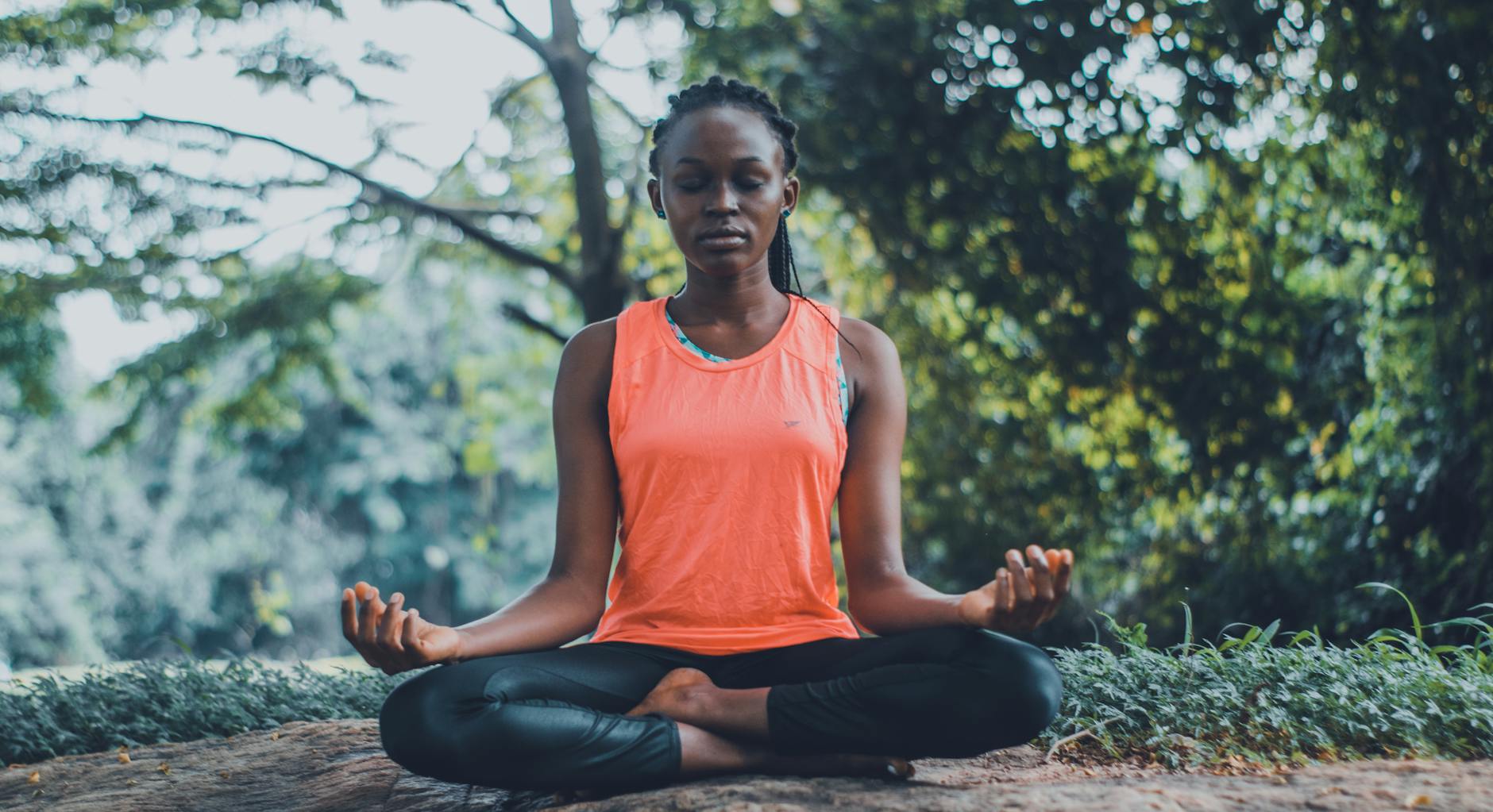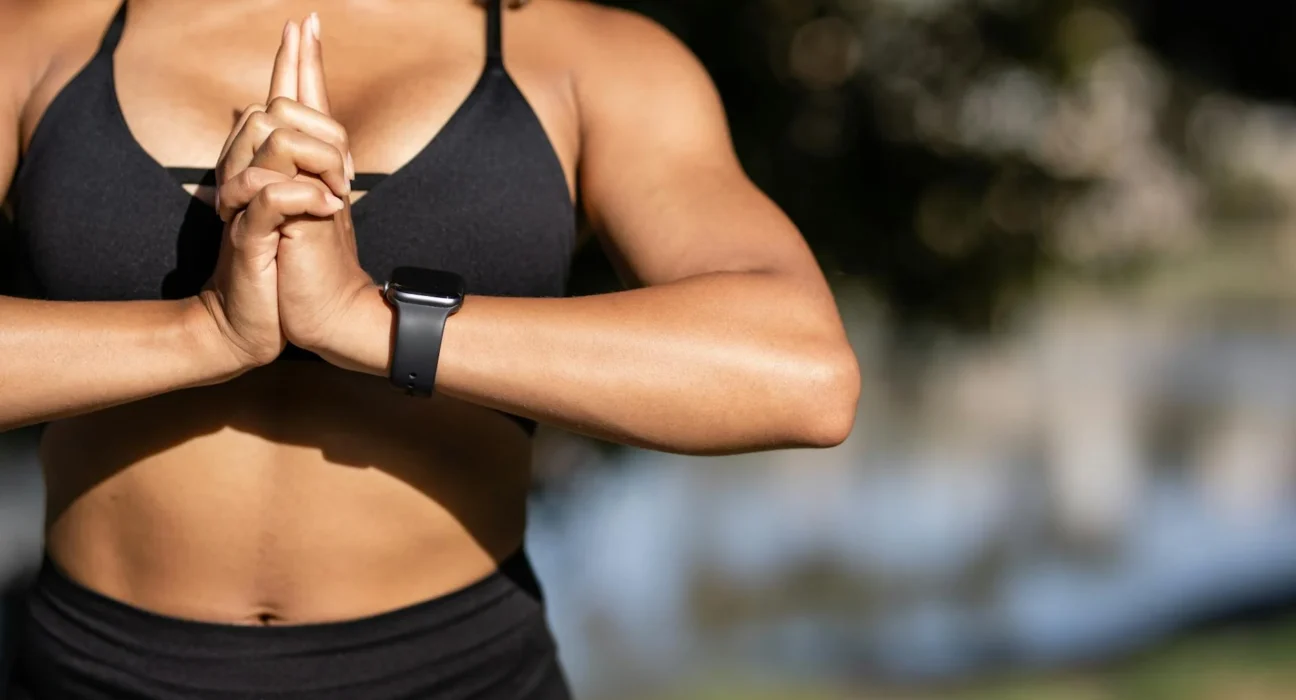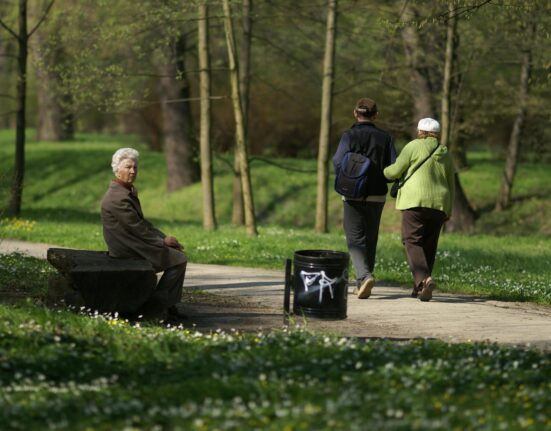Meditation isn’t just for those who can sit cross-legged for hours without blinking. If your mind races or your legs twitch the moment you try to stay still, you’re not broken—you just need a different approach.
The benefits of meditation, from sharper focus to lower stress, don’t require perfect stillness. For restless minds and fidgety bodies, small shifts in technique make all the difference. This guide strips away the intimidation with simple, adaptable practices that meet you where you are—no forced serenity required.
Ready to move, breathe, and finally find your version of calm? Let’s begin.
Why Traditional Meditation Doesn’t Work for Everyone
Sitting still and clearing your mind sounds simple—until you try it. The moment you close your eyes, your brain becomes a bustling train station: thoughts arriving, departing, and colliding. If the classic “sit and breathe” method leaves you frustrated rather than focused, you’re not alone. Traditional meditation assumes a calm body equals a calm mind, but for many, stillness amps up restlessness instead of dissolving it.
The Restless Mind Dilemma
For some, forcing stillness is like pressing pause on a movie while the soundtrack keeps playing. The body quiets, but the mind races faster—replaying conversations, drafting to-do lists, or fixating on discomfort. Anxiety, ADHD, or even a naturally high-energy disposition can turn seated meditation into a battle against your own wiring.
The problem isn’t you. It’s the mismatch between method and mindset. When stillness feels like confinement, your brain rebels. Fidgeting isn’t failure—it’s feedback. Your nervous system craves motion to process stress, not surrender to it.
Alternative Paths to Mindfulness
Meditation doesn’t demand a motionless body. It asks for a present mind. If sitting still backfires, try these active approaches:
- Walking meditation: Sync your breath with your steps. Notice the shift of weight in your feet, the air against your skin. Pace doesn’t matter—only awareness does.
- Mindful movement: Yoga, tai chi, or even stretching anchor attention to sensation. The body becomes the meditation object.
- Dynamic focus: Activities like coloring, knitting, or washing dishes can channel restless energy into rhythmic, mindful tasks.
The goal isn’t to empty your mind but to meet it where it is—even if that’s in motion.
Active Meditation Techniques for the Restless Soul
For those who feel trapped by traditional seated meditation, motion can be the gateway to mindfulness. When your body resists stillness, lean into movement—it’s not a distraction, but a different path to presence.
Walking Meditation: Steps to Stillness
Walking meditation transforms a simple activity into a practice of awareness. Instead of rushing to a destination, you move with intention, letting each step anchor you to the present moment.
Here’s how to start:
- Choose a quiet path: A flat, familiar route minimizes distractions. A park or quiet hallway works well.
- Sync breath and steps: Inhale for two steps, exhale for two. Adjust the count to what feels natural.
- Notice sensations: Feel the ground under your feet, the swing of your arms, the breeze on your skin. When your mind wanders, return to these details.
Beginners often push for long sessions—don’t. Start with five minutes. The goal isn’t distance but depth of attention.
Yoga and Mindful Movement
Yoga isn’t just flexibility training. When done mindfully, it’s meditation in motion. The key is linking breath to movement, turning each pose into a moment of focus.
Try these poses to cultivate stillness within motion:
- Mountain Pose (Tadasana): Stand tall, feet grounded. Breathe deeply, noticing how your body aligns. Simple, yet powerful for centering a busy mind.
- Cat-Cow Stretch: Flow between arching and rounding your back with each breath. The rhythm quiets mental chatter.
- Forward Fold (Uttanasana): Bend at the hips, letting your head hang. Sway slightly if needed. Feel the stretch, not the strain.
Yoga meets restlessness with structure. Your body moves, your mind follows.
Breathwork in Motion
Breathing exercises don’t require a yoga mat. Pair them with daily activities to turn mundane tasks into meditation.
- While stretching: Inhale as you reach upward, exhale as you fold forward. Let the breath guide the motion.
- During chores: Washing dishes? Breathe in as you scrub, out as you rinse. The repetition becomes rhythmic and calming.
- On a walk: Match your breath to your strides—inhale for three steps, exhale for four. Adjust to find your rhythm.
Movement keeps the body engaged so the mind can settle. It’s not about stopping thoughts but syncing them to something tangible.
Engaging the Senses for Focus
Meditation isn’t just about closing your eyes and silencing thought. For restless minds, tuning into your senses can be the anchor you need. Sound, touch, and even smell can pull focus back when distractions creep in. These techniques work because they give your mind a job—something concrete to hook into while the world buzzes around you.
Sound Baths and Listening Meditations
Sound has a way of cutting through mental clutter. Instead of fighting noise, use it as a tool. Listening meditations turn everyday sounds—rain, wind chimes, even distant traffic—into focal points.

Photo by Oluremi Adebayo
Try these soundscapes to guide your focus:
- Nature sounds: Rainforest ambience, ocean waves, or crackling fireplaces mimic natural rhythms. Apps like Noisli or Calm offer high-quality recordings.
- Binaural beats: These layered tones encourage brainwave states linked to relaxation. Start with theta waves (4-8 Hz) for deep focus.
- Singing bowls: The resonance of Tibetan bowls vibrates through the body, making distractions fade.
Don’t just listen—immerse. Notice how sounds shift, overlap, and fade. When your mind drifts, return to the nuances in the noise.
Tactile Meditation: Using Touch to Ground Yourself
Your hands are built for focus. Tracing textures or holding objects gives your mind a physical anchor, redirecting energy away from restlessness.
Simple tactile tools to try:
- Smooth stones: Warm a palm-sized stone in your hand. Focus on its weight, temperature, and ridges.
- Textured fabrics: Run your fingers over a knit blanket or silk scarf. Notice the contrast between threads.
- Kinetic sand or putty: Kneading malleable materials syncs movement with breath, quieting mental chatter.
The key is curiosity. Explore how things feel—not just with your fingertips, but with your full attention. Touch reminds you where you are, one sensation at a time.
Micro-Meditations for Busy Lives
Meditation doesn’t need hours of silence or perfect conditions. For those who can’t sit still, micro-meditations weave mindfulness into the cracks of your day—during a lunch break, between emails, or even while brushing your teeth. These tiny pauses reset your nervous system without demanding extra time.
One-Minute Breathing Breaks
Your breath is the fastest way to dial down stress. You don’t need a quiet room or special gear—just 60 seconds and intention. Try these quick techniques anywhere:
- 4-7-8 Breathing: Inhale for 4 counts, hold for 7, exhale for 8. This pattern slows your heart rate and quiets racing thoughts. Perfect before meetings or after a frustrating email.
- Box Breathing: Breathe in for 4, hold for 4, out for 4, hold for 4. Repeat. It’s like hitting a mental reset button mid-task.
- Sigh Breaths: Take a deep inhale through your nose, then release a loud, slow sigh through your mouth. Do this twice. It releases tension instantly.
Pair these with routine pauses—while waiting for coffee, at a red light, or after a phone call. The goal isn’t perfection, but consistency.
Mindful Eating as Meditation
Eating is often a mindless scramble between tasks. But what if each bite could anchor you to the present? Turn meals into micro-meditations with these steps:
- Pause before eating: Take three breaths. Notice the colors and smells on your plate.
- Chew slowly: Aim for 20 chews per bite. Taste shifts when you let flavors unfold.
- Put down your fork between bites: This breaks autopilot mode and helps you recognize fullness cues.

Photo by Vlada Karpovich
Try it with a raisin first. Feel its texture, sweetness, and how it changes as you chew. This tiny exercise trains your brain to apply the same focus to bigger meals.
Mindful eating isn’t about restriction—it’s about savoring. When you eat with attention, you digest better, enjoy more, and often eat less without trying.
Creating a Personalized Meditation Routine
Meditation isn’t one-size-fits-all. Your routine should fit your energy, schedule, and restless tendencies, not force you into a mold that doesn’t work. The best practice is the one you’ll actually do—consistently, without dread. Here’s how to build a routine that bends with your life instead of breaking it.
Mixing and Matching Techniques
Why stick to just one method? Active meditation thrives on variety. Combine techniques to match your daily rhythms. On high-energy mornings, try walking meditation. During lunch breaks, use breathwork. Wind down with tactile focus at night.

Photo by RDNE Stock project
Examples of flexible combinations:
- Movement + sound: Walk while listening to nature sounds. Let your steps sync with bird calls or flowing water.
- Breath + touch: Hold a smooth stone during box breathing. Focus on its weight as you count each exhale.
- Micro-pauses + mindfulness: Take three sigh breaths before checking your phone. Notice how it shifts your urge to scroll mindlessly.
Think of it like a playlist. Some days you need calming instrumental, other days upbeat rhythms. Adjust your practice to the moment.
Setting Realistic Goals
Starting with lofty goals sets you up for frustration. A sustainable habit begins small—small enough that skipping feels sillier than doing it.
How to build without burnout:
- Start with time, not perfection: Two minutes daily beats twenty minutes once a week. Set a timer if needed.
- Attach it to a habit: Meditate right after brushing your teeth or tying your shoes. Existing routines anchor new ones.
- Track progress loosely: Check off days on a calendar, but don’t police “quality.” Showing up is the win.
Forget hour-long sessions. Think in moments. Five breaths before a meeting. Noticing three sensations during a shower. Tiny actions compound into real change.
Remember, this isn’t about conquering restlessness—it’s about working with it. Your routine should feel like slipping into well-worn shoes, not breaking in stiff new ones.
Conclusion
Meditation isn’t about silencing your mind or freezing your body—it’s about finding focus in motion. Whether through walking, breathwork, or tactile grounding, calm comes in many forms. The best practice isn’t the one you should do, but the one you’ll want to do.
Start small. Pick one technique—just five minutes today—and let curiosity lead the way. Your version of mindfulness doesn’t need to look like anyone else’s.
Ready to move your way to calm? Lace up your shoes, grab a smooth stone, or simply take the next breath like it matters. The moment you start is the moment it works.








